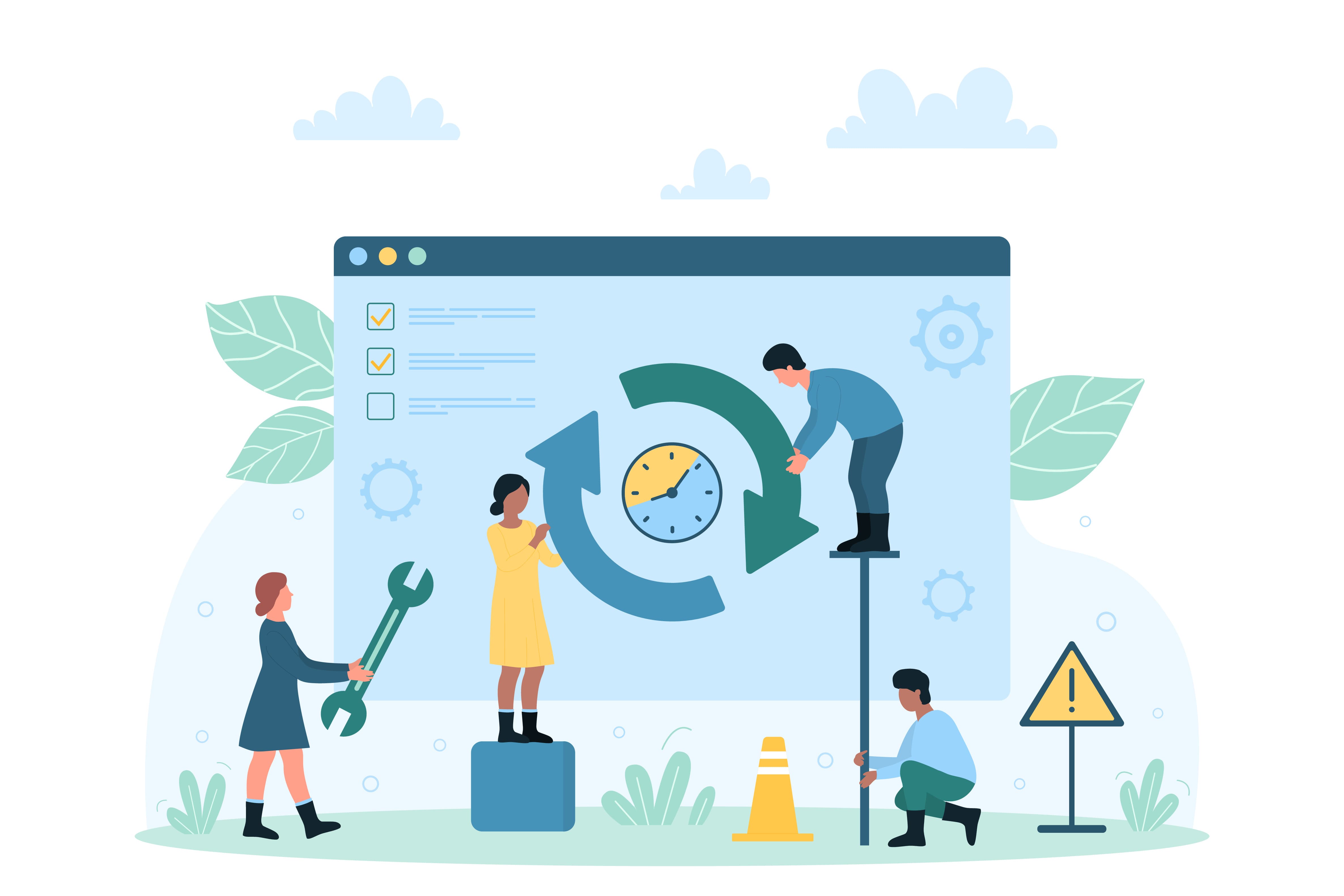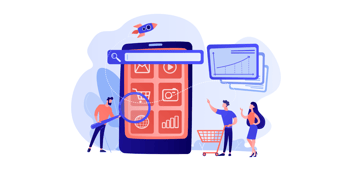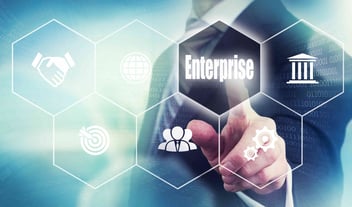Ever driven an old, rusted car on a highway filled with sleek, high-speed vehicles? That’s what running a business on legacy system modernization can feel like. But why does this happen?
You see, these systems are akin to faithful old workhorses. They’ve carried your company’s data processing and vital business operations for years—maybe even decades.
Sure, they might groan under the strain of new technologies or grumble when integrating systems becomes necessary—but you know them inside out. You trust them because they’re tried-and-tested warriors in your enterprise battlefield.
In contrast, adopting technologies seems like inviting uncharted territory into your well-oiled machine—an understandable fear!
Let’s dive into the journey of legacy software modernization. We’ll guide you through its challenges and strategies, helping to get rid of any fears you might have. Let’s begin this voyage of modernizing legacy software without hesitation.
Table Of Contents:
- Understanding Legacy System Modernization
- The Need for Legacy System Modernization
- Challenges and Risks in Legacy System Modernization
- Approaches to Legacy System Modernization
- Evaluating Legacy System Modernization Options
- Best Practices for Legacy System Modernization
- FAQs about Legacy System Modernization
- Conclusion
Understanding Legacy System Modernization
The digital world is rapidly evolving, and businesses constantly try to keep up. One area that’s becoming a focus for many organizations is legacy system modernization. But what does this mean?
At its core, legacy systems refer to outdated computer systems, programming languages, or application software that are still in use.
A surprising stat from Cloud Spok reveals that three-quarters of US organizations continue to support at least one type of pager – an excellent example of a legacy system. It’s akin to riding a horse-drawn carriage on the freeway; it’ll get you where you need to go, but not efficiently or safely.
Legacy Infrastructure Modernization, as Deloitte explains, involves updating these old technologies with more advanced ones better suited for today’s fast-paced business environment.
The Impact of Outdated Software on Business Operations
We all know the frustration when our phone or laptop slows down because we haven’t updated them recently – now imagine this on a larger scale within your business operations. Using outdated software can significantly impact internal processes due to inefficiency and frequent issues related to ‘software rot.’
This problem isn’t just about keeping up with new technology trends; it has real-world implications on vital business processes, too.
Maintaining Old Systems Can Be Costly Too.
Failing infrastructure maintenance also comes with high costs – both financial and operational. Understanding the need for legacy system modernization is crucial for any organization wanting future growth without hitches.
Running old hardware could be equivalent to sticking to legacy code – expensive, inefficient, and potentially disastrous if left unchecked.
Why Should You Care?
Businesses often believe, “If it ain’t broke, don’t fix it.” But when dealing with software applications or systems their creators no longer support, you’re opening yourself up to a world of problems.
Let’s not procrastinate; let’s take action. Let’s not leave things half-baked.
The Need for Legacy System Modernization
With the ever-evolving digital landscape, businesses must keep pace to stay relevant. Yet many companies rely on outdated legacy systems that can’t meet modern business needs or security requirements. This reliance isn’t just about nostalgia—it’s often due to substantial investments made over time and an apprehension of change.
In 2023 alone, the US Federal government spent 80% of its IT budget maintaining these aging infrastructures—indicating the widespread need for legacy system modernization.
Impact on Quality Assurance and User Experience
Digital transformation is not merely a buzzword but a critical driver in today’s economy. It brings enhanced quality assurance processes and improved user experience—both areas where legacy systems fall short. As customer expectations rise, sticking with old systems could mean losing out to more agile competitors who deliver better experiences.
Outdated software also poses serious security vulnerabilities as hackers become increasingly sophisticated. Staying secure means keeping up-to-date—not just with your firewalls—but by upgrading those older systems too.
Adapting Business Models with Modern Systems
An essential aspect of business growth involves evolving alongside changing market conditions, including technological advancements. Outmoded applications struggle to integrate into advanced tech environments, inhibiting innovation and limiting potential growth avenues.
Moving away from these antiquated setups doesn’t only reduce risk—it can provide valuable opportunities, too. A well-executed migration process allows you to adopt new technologies that align better with current business models, making decisions easier and paving the way for future expansion.
If we view it from this perspective, the need for legacy modernization becomes a stepping stone toward business resilience and growth rather than just an IT upgrade. So why wait? Start your digital transformation journey today.
Challenges and Risks in Legacy System Modernization
The journey of modernizing legacy systems is like navigating a maze. You might have the best intentions, but hidden challenges and risks could trip you up.
Choosing the Right Modernization Strategy
To start with, choosing the right modernization strategy can be daunting. It’s akin to picking out an outfit for a big event – every choice has merits and potential drawbacks.
In terms of costs, maintaining outdated systems can be expensive. The operation and maintenance of just ten top-tier GAO legacy systems cost taxpayers about $337 million annually. Imagine how much businesses are spending on their own aging infrastructure.
Beyond financial implications, one must also consider other aspects, such as user experience, data processing capabilities, or even simple software support, while making decisions about modernizing these dinosaurs. An ill-thought-out approach may lead to complications during migration processes, resulting in delays or failures.
The Risk Factor
Risks aren’t only tied down to strategies but embedded throughout the process. For instance – when integrating new technologies into existing structures – compatibility issues often arise causing disruption in business operations.
Sometimes, it’s not about replacing old applications completely but updating certain parts needing attention (like your car). This too comes with its set of problems though: introducing advanced technology into underlying infrastructure built years ago could cause more harm than good if not done properly.
Facing Challenges Head-On
Moving away from familiar grounds is never easy but essential for future growth. Legacy system modernization isn’t just another IT project; it involves fundamental changes to how your business operates.
It’s not unlike renovating an old house. You’re not just replacing a few tiles or adding new paint – you’re transforming it from top to bottom, ensuring it remains relevant and can deliver optimal value in today’s digital era.
With this journey, remember that getting the gist is like winning half of the battle. Spotting possible roadblocks early on can help you dodge risks and sail smoothly.
Approaches to Legacy System Modernization
No single approach fits all when modernizing legacy systems; thus, it is essential to take into account the existing business environment, individual needs and potential future growth prior to deciding which route best suits. It requires careful consideration of the current business landscape, your specific set of needs, and how future growth might impact those requirements. So let’s get into the different modernization approaches.
Exploring the Legacy Modernization Process
The first step in any legacy software modernization project should be understanding what you’re working with. This process involves deep-diving into your existing software infrastructure and data structures – akin to taking apart an old watch piece by piece before deciding if it’s worth fixing or replacing altogether.
Data processing capabilities are crucial for this initial analysis phase because they help determine whether you can use advanced technology like machine learning during the modernization process itself or afterwards for continuous improvement.
Astonishingly, according to HIMSS Cybersecurity Survey, almost 80% of respondents still utilize legacy applications despite known risks such as outdated security measures or lack of support from vendors who have moved onto newer technologies.
Making decisions on which areas need more attention becomes easier when we have these insights about our underlying infrastructure at hand.
User Experience-Driven Approach
This approach focuses primarily on enhancing user experience (UX) while upgrading legacy applications. A slick UX doesn’t just make end-users happy; it also streamlines internal operations that often depend heavily on manual input from employees due to outdated interfaces in older systems.
Bite-Sized Modernizations via Agile Software Development
If your organization isn’t ready for a complete system overhaul, Agile software development methods offer an iterative approach to modernization. This technique focuses on delivering optimal value through small but consistent updates instead of waiting for a complete replacement.
Re-Platforming
current systems and support future growth is crucial. Legacy system re-platforming, while complex, can bring significant benefits to a business. This includes improved efficiency, reduced operational costs, and enhanced scalability.
Evaluating Legacy System Modernization Options
Modernizing legacy systems is like swapping out the engine of a classic car while it’s still running. You want to preserve the valuable parts, but replace what’s slowing you down. Various choices should be taken into account when beginning this intricate undertaking.
The Role of Data Structures in Modern Systems
Data structures play an integral role in modern software architecture. Think about them as the scaffolding that holds up your software; they enable efficient data processing and ensure continuous delivery of services.
For instance, agile software development relies heavily on effective data structures for quick iterations and rapid product deployment. It’s akin to having a well-organized toolbox where every tool has its place and can be accessed quickly when needed.
It might surprise you how much we depend on these digital tools: one study found that processing a mobile banking transaction costs 42 times less than doing it offline at a physical bank.
In evaluating your modernization approach, consider whether your current data structures will integrate smoothly with advanced technology or if they need an overhaul too.
User Experience And Business Processes In Focus
Your chosen path should also enhance user experience (UX) – think smoother navigation or faster load times – rather than complicate it further due to underlying infrastructure issues.In terms of business processes, look for solutions that not only align with current operations but also allow room for future growth.
You wouldn’t plant a sapling in shallow soil would you?. The same concept holds true here.
We’ve seen projects fail because their focus was too narrow, overlooking key elements like data migration or systems integration. Bear in mind that modernizing legacy systems is not merely about bringing in new tech; it’s also about settling on decisions which will bring the most benefit to your business.
So take your time during the evaluation phase, it’s crucial in the modernization process. Don’t rush through this critical stage.
Best Practices for Legacy System Modernization
The journey to modernize legacy systems can feel like an uphill battle, but with the right strategies and best practices in place, it becomes a lot more manageable. The trick is to ensure that you make wise decisions while considering your specific set of business requirements.
A crucial part of this process involves understanding the costs associated with system modernization. Often, businesses overlook these expenses, leading to projects failing or not delivering optimal results. An essential practice here is making sure that every penny spent contributes positively towards future growth.
One way to achieve this is by integrating advanced technology into existing software structures strategically rather than starting from scratch. This helps maintain continuity in vital business processes and also saves on resources.
Evaluating the Costs of Modernization
To begin evaluating costs effectively, let’s start by asking ourselves some key questions: How will our current business operations be affected during migration? What about after?
We need to consider factors such as data processing timeframes during migration and any changes required in underlying infrastructure post-migration. Furthermore, adopting technologies no longer supported could increase costs due to increased maintenance efforts or compatibility issues with newer tech stacks.
- Analyze all potential cost points – both obvious ones like new hardware/software purchases and hidden ones like employee training for new systems usage.
- Always factor in contingency amounts – because when has a large project ever stayed strictly within budget?
- Last but definitely not least – plan long-term. Consider scalability needs along with immediate benefits.
GAO reports suggest that poor planning leads government agencies spending millions annually on outdated systems instead of investing them into promising modern alternatives.
Recall, it’s not only the monetary expenditure that matters but also potential losses. Failing to modernize can result in missed opportunities for innovation and growth.
In essence, the key to a successful legacy system modernization lies in meticulous planning that balances both immediate needs and long-term business goals.
FAQs about Legacy System Modernization

What is legacy system modernization?
Legacy system modernization is updating and upgrading outdated business systems to enhance efficiency, security, and scalability.
What is an example of legacy modernization?
An example would be a bank switching from old mainframe-based software to cloud-native applications for better customer service.
What is an example of a legacy system?
A typical instance might be older COBOL-based banking software that can’t keep pace with today’s digital needs.
What are the approaches to legacy modernization?
The strategies include rehosting, replatforming, refactoring, rearchitecting, or replacing existing systems depending on specific requirements and constraints.
Conclusion
Stepping into the world of legacy system modernization might seem like uncharted territory. But with understanding comes clarity.
You’ve now learned why businesses hold onto outdated systems and how this affects operations, user experience, and business growth.
You’ve grasped the potential hurdles in updating these legacy applications, but also discovered various approaches to tackle them effectively. Data structures and agile software development aren’t foreign concepts anymore.
Beyond all that technical jargon, you understand what it takes to evaluate costs involved in a modernization initiative successfully. And most importantly…
You’re aware of real-world success stories where companies have emerged victorious from their modernization journeys.—Inspiring isn’t it?
All said and done,—you’re better equipped than ever before to embrace change while maintaining your company’s unique identity—a powerful combo!





